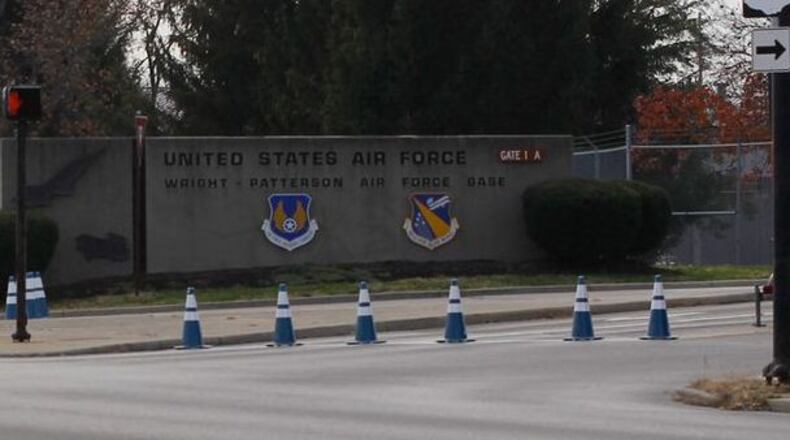Air Force leadership has told AFMC it may impose:
- a civilian hiring freeze;
- fire temporary employees;
- not renew contracts with contracted employees;
- curtail unnecessary travel;
- stop or curb minor purchases such as furniture and computers;
- defer maintenance and modernization projects, among other actions.
Further actions at a later date could include civilian workforce furloughs if Congress and President Barack Obama fail to avert budget cuts in March, according to the Air Force.
Wright-Patterson, the state’s largest single site employer with more than 29,700 military and civilian personnel, falls under the authority of AFMC, its largest command and biggest employer within the base.
AFMC spokesman Ron Fry said Wednesday that headquarters staff has begun working with leaders at nine Air Force bases within the command to come up with a “definitive plan” by late this week or early next week on how and when to carry out the directive. Whatever is decided could impact more than 80,000 AFMC military and civilian personnel who work nationwide. Of those, more than 60,000 employees are civilians.
At Wright-Patterson, the command has oversight of the Air Force Research Laboratory, the Air Force Life Cycle Management Center and the National Museum of the U.S. Air Force.
“I opposed sequestration from the beginning because I knew it would result in job losses and cuts at Wright-Patt,” U.S. Rep. Mike Turner, R-Centerville, said Wednesday. “The uncertainty that comes with sequestration as well as its potential impact will have far reaching consequences for our uniformed servicemembers, civilian personnel, and the defense contractor industry as a whole.”
Turner’s congressional district covers Montgomery and Greene counties.
The continuing unknown about whether Congress and the president will avert nearly $500 billion in mandatory, across-the-board cuts by a March 1 deadline to the Department of Defense has caused consumer confidence to wane, said Phillip L. Parker, president and chief executive officer of the Dayton Area Chamber of Commerce. The Pentagon has already agreed to absorb an additional $487 billion over a decade.
Additionally, a continuing budget resolution which carries over funding levels from the prior year expires March 27. Federal lawmakers also face a showdown over raising the nation’s $16.4 trillion debt ceiling in the weeks ahead.
“We all know that has a chilling effect if you don’t have consumer confidence if you don’t know what’s going to happen with your career or your job,” Parker said. “This is very frustrating, it’s very alarming, it’s very concerning because Wright-Patt is such an important economic engine in our community.”
Civilian fuloughs are possible
In a Jan. 14 memo, Air Force Vice Chief of Staff Larry O. Spencer and Jamie M. Morin, acting under secretary of the Air Force, outlined the actions because of continued budget uncertainty and a projected $1.8 billion shortfall this fiscal year to pay for overseas contingency operations.
“Our intent with these initial actions is to pursue reversible or recoverable steps and avoid impacts to core readiness,” the memo said. If the Air Force didn’t act now with additional cuts pending, the effects “would be even more devastating on readiness,” the two leaders wrote.
Spencer and Morin urged commanders and civilian directors to “minimize harmful effects on our people and unit readiness,” but left open the possibility of civilian furloughs of 22 work days or a 30-day calendar month if further budget cuts cannot be avoided.
Along with restricting civilian hiring, curtailing flying not related to readiness, and curbing travel and purchases, the memo mentioned “where practical” to “de-obligate/incrementally” fund contracts for only this fiscal year in areas such as base maintenance, advisory and assistance services and custodial contracts and to look for “longer term savings” as well.
Senior officials could make exceptions to the cuts for “mission critical activities and civilian positions,” the two leaders said.
The near-term actions would achieve a small portion of the cuts needed for sequestration, but if larger cuts hit the two warned “immediate actions with serious negative impacts to core readiness programs will be required.” Those longer-term actions could include civilian workforce furloughs. “However, we very much hope Congress will address the current budgetary uncertainty and allow us to avoid these actions,” they wrote.
The Air Force would provide additional direction when appropriate, the memo said. “We encourage you to plan for additional actions to meet adjusted funding levels,” the two wrote.
Along with Wright-Patterson, the other major installations that would be impacted include: Hanscom Air Force Base, Mass.; Robins Air Force Base, Ga.; Eglin Air Force Base, Fla.; Arnold Air Force Base, Tenn.; Tinker Air Force Base, Okla.; Kirtland Air Force Base, N.M.; Hill Air Force Base, Utah; and Edwards Air Force Base, Calif.
About the Author
